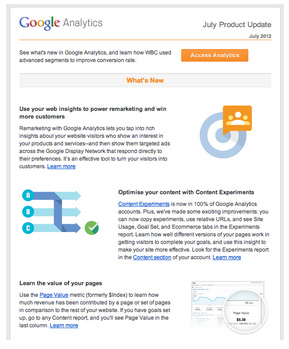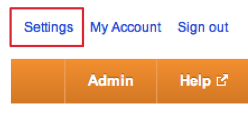At Google, we enjoy hearing from you, the developer community, and working with you to ensure that progress is being made. We think the latest DFP API release reflects positively on how we work better together and we're excited to announce version v201208. This release adds new types of creatives, support for optimization, rich media, and video interaction report columns, along with new options for downloading reports. A full list of improvements from this release can be found on our
release notes page. We also want to remind you that we host virtual office hours via Google+ hangouts in order to make sure your voice is heard. Stay tuned to our
Google Developers Live calendar to catch the next one on September 18th.
Reporting improvementsIn v201208, we’ve added 64 new columns which enable you to pull metrics for
optimization,
rich media, and
video. Using these new columns, you’ll now be able to better track performance of your network including determining the interaction time of your rich media (e.g.
RICH_MEDIA_INTERACTION_TIME), locating videos which complete the most (e.g.
VIDEO_INTERACTION_COMPLETE), or analyzing the revenue resulting from optimized impressions (e.g.
OPTIMIZATION_OPTIMIZED_REVENUE). In addition to these columns, we’ve added the
CREATIVE_TYPE dimension and the ability to include
custom fields to help you better break down your reports.
For applications which cannot process gzip files, you can now download reports already
deflated using the new
ReportService.getReportDownloadUrlWithOptions method. If you choose to not use gzip compression, we still highly recommend that you set the HTTP header
Accept-Encoding: gzip to speed up downloads. We’ve also added the ability to
include report properties (e.g. network, user, generation date, etc...) and
remove the totals row. If there are any other types of report download options you’d like to see, we’d love to hear about them on the
forum.
Creative additionsFor publishers who are using the cutting edge features of DFP, we’ve added support for four new creative types:
AdSenseCreative,
AdExchangeCreative,
RichMediaStudioCreative, and
AspectRatioImageCreative. AdSense and Ad Exchange creatives allow you to traffic
line item level dynamic allocation ads by serving
ad slot code snippets as the creative asset. Rich media studio creatives allow you to fetch creatives created using the
DoubleClick rich media studio. Although these creatives are mostly used in a read-only manner (since they are created in the rich media studio and not DFP), some fields are mutable, such as the
duration, any
CSS overrides, and
URLs. Finally, aspect ratio image creatives let you upload
multiple image assets of the same aspect ratio to give you control of how images should be scaled; these creatives are mostly used in a mobile environment given the variety of screen sizes and resolution of today’s devices.
Last but not leastIn our ongoing effort to bring the API up to parity with the UI, we’ve also added a number of smaller features. These include additional
company partner types, the ability to set the
mobile platform type on ad units, a
friendly display string for inventory sizes, the option to
associate line items with creative sets , and support for the recently released
device category targeting criteria.
Our API and outreach efforts are constantly growing, but we can't do it without you. If there is anything you'd like to see us do better, please
let us know or introduce yourself in the next
Google+ hangout on September 18th.

-
Adam Rogal, DFP API Team



